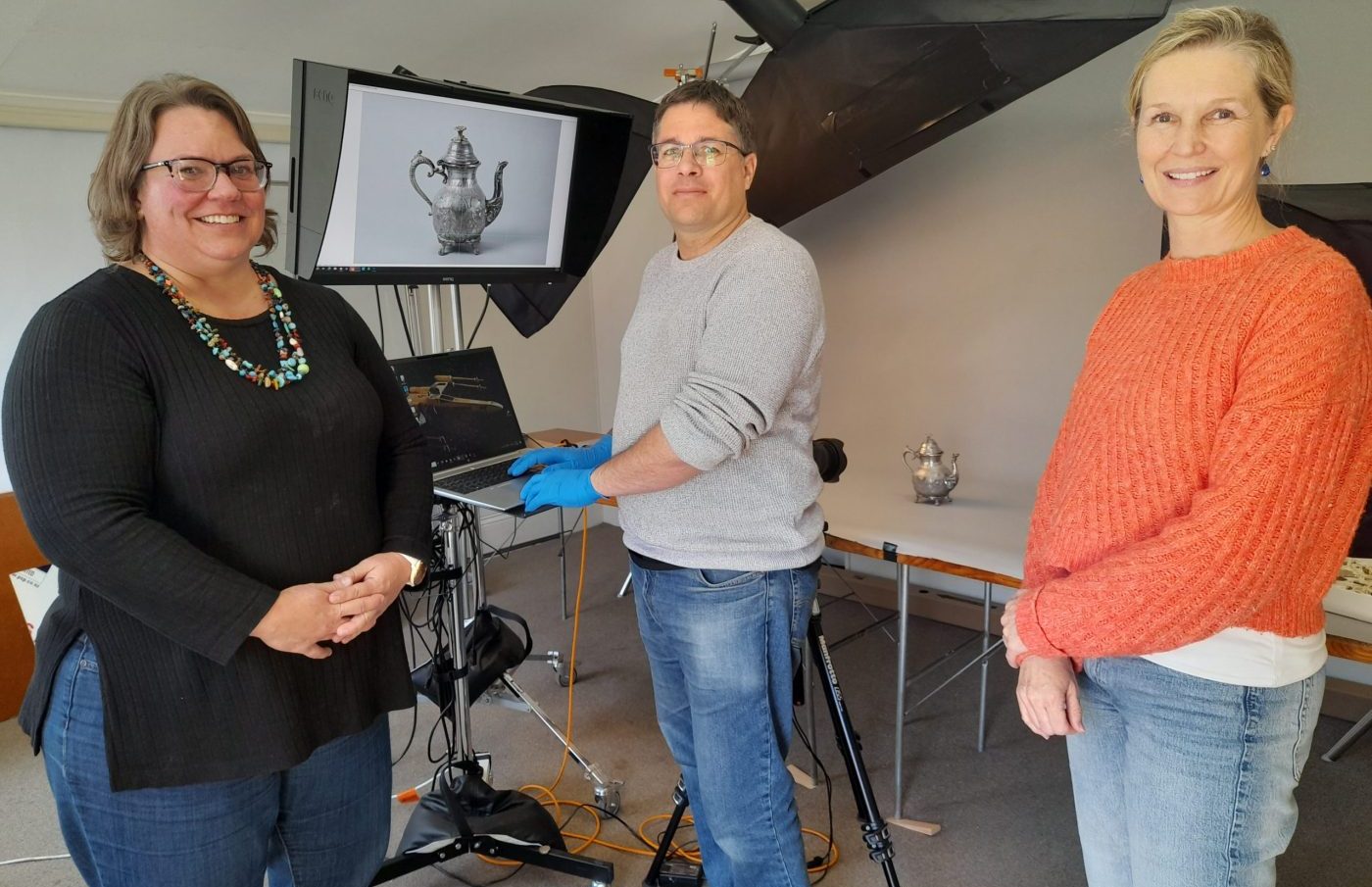
A treasured heritage museum dedicated to preserving east Auckland’s historical artefacts is learning a new system for recording exactly what it has.
Tasked with documenting and photographing the literally tens of thousands of objects it holds, the Howick Historical Village is having a special and intensive three-month training course by an expert team from the New Zealand Maritime Museum to get the mammoth task going.
Described by Howick Historical Village (HHV) general manager Lexie Palmer-Gapper, it’s “the digitisation of the collections held by the village – objects, textiles, archives, photos, paper-based materials – letters, diaries, maps – unique, personal”.
One of the objects, a dress, dates from the early 1800s, as do diaries, and the village’s collections cover the years from before the Fencibles arrival in 1847 to 1917, with a focus on 1840-1880.
The digitisation team from the Maritime Museum is funded by the NZ Lotteries Commission and Tātaki Auckland Unlimited.
Its project manager, Heidi Schlumpf, tells the Times on our visit to the HHV, that it’s an “outreach project” from the Maritime Museum digitisation hub, where the team “helps other small heritage organisations in Auckland”.
They instruct over 12 weeks of “intensive” training the HHV staff and a group of volunteers how to enter the information about artefacts into Vernon, a software collection management system.
Schlumpf says, “it’s used through Australasia” and in Auckland at the Museum of Transport and Technology (MOTAT), Auckland War Memorial Museum, and Maritime Museum.
To enable the HHV project to happen, money was required, Palmer-Gapper explains.
“We were fortunate to have received funding from National Services Te Paerangi, and the Howick Local Board to purchase Vernon.
“Now the Maritime Museum is helping us use it to its fullest, as we catalogue our textile collection and other historically significant objects.
“The HHV has one of the best collections of textiles in New Zealand, for its range and quantity, the histories of the materials. This project helps keep this history alive.
“Without a good collections management system, you only have a pile of stuff.
“We want the objects and their stories kept together.”

It’s not only smaller objects that information is being captured for posterity as digital files will also contain details of the HHV’s buildings and horticulture collections, including for historic plants.
The HHV has always been good and productive recordists and guardians of information about its artefacts – east Auckland’s historical items – and has done so since original creator Alan La Roche – the Howick Historian – founded the museum in 1980.
He, alone, wrote up literally hundreds of thousands of details of the collections at the HHV, and of course there have been scores of Howick and Districts Historical Society (HDHS) members and volunteers who have done the same tasks over 44 years.
The HHV has also had computerised recording of its collections inventory until now, but Vernon is a system at the next level with the amount of information that can be input and stored securely in it.
Each of the HHV’s items will have its own unique number in Vernon and link to both photographs at different angles and historical information.
Palmer-Gapper adds: “This is a great opportunity to see what strengths we have, and what we need to be doing better.
“It also gives volunteers and staff the opportunity to upskill.”
Palmer-Gapper also acknowledges the group of women society members known as “the Core Four” who have been responsible for keeping existing records of collections for many years: Pam Taylor, Janet Claridge, Judy Wilson and Joan Gill, along with the extensive knowledge of Marin Burgess, the HDHS heritage advisor, and now-retired volunteer Irene McCutcheon.









